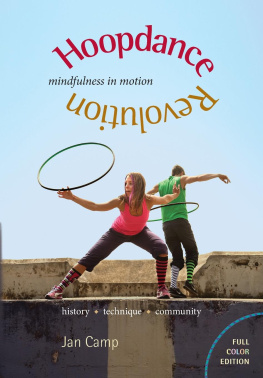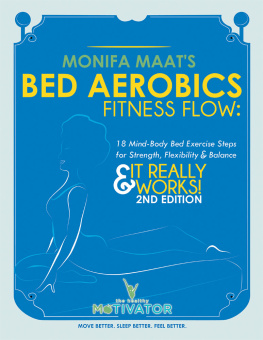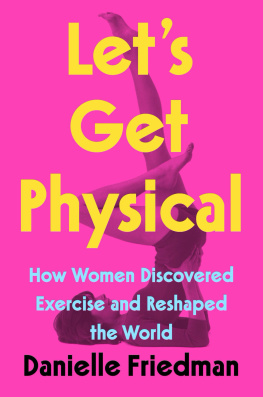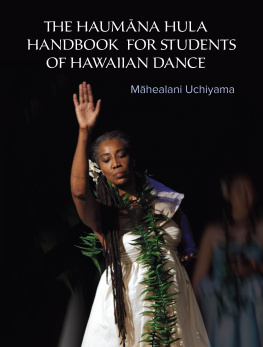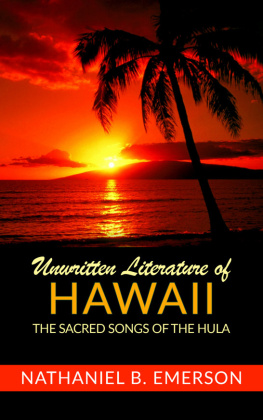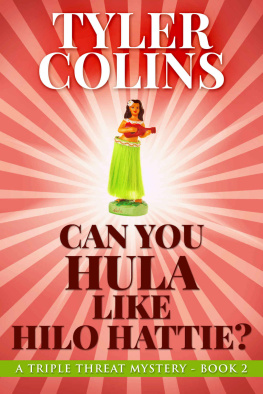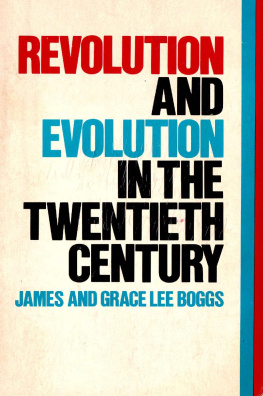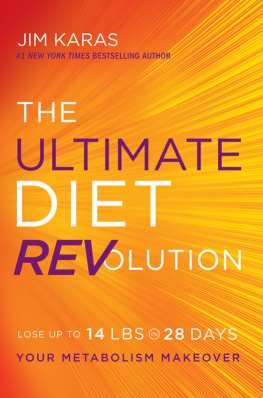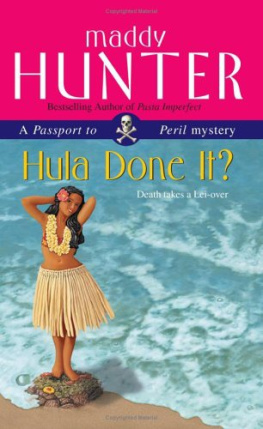
Vintage French postcard
Preface
My Call to the Hoop
During the 1950s, I spent hours playing with siblings and friends in the grassy backyard of my childhood home. For us life was a twenty-four-hour party, and we never wanted to stop running the length of the lawntwirling, jumping, and singing songs from my older sisters 45s. Whole lotta shakin goin on... and I found my thrill on Blueberry Hill... were lyrics we didnt fully understand and were not supposed to recite, but their rhythms captured the spirit of our play. When my father called us in for bed, we threw ourselves to the ground laughing or ran circles around him like cats refusing to be caught.
That rebellious energy continued to define my life until a condition in middle age threatened to stop me in my tracks. After years of physical therapy for chronic back pain I learned that muscle spasms and misaligned vertebrae were not the root cause of my trips to the emergency room. The severe turning of my head to the right and hips to the left was neurological in origin. A specialist called it dystonia torticollis and counseled, Join a support group, and dont come back to my office because there is nothing I can do. Aging had superseded the party.
I explored everything from psychic healing to sound therapy and prescription drugs to prove the neurologist wrong. I relearned how to keep a normal posture and continued my work in fine art and graphic design. It was an improvement, but it was also difficult and disheartening. Then after buying myself a rocking chair with which to settle into old age, I received an e-mail about a hoopdance class at a yoga studio. Hula hooping with yoga? I had to see this. Convincing a friend that it might be fun to watch, even if we couldnt actually do it, we signed up.
In the class we were introduced to heavier, bigger hoops than we remembered from childhood. A typically lovely young instructor was our leader, and we held hoops throughout the warm-up exercises. Then as classmates struggled to coordinate limbs and core, we got rowdy and uncontrollable. We laugheda lot!reminiscent of our hula hooping as children.

Prior to the class Id had little physical activity for several years. Suddenly, here was the hoop, bumping against my body, leading, resisting, picking up momentum, and begging me to dance. It circumvented my neurological glitches by making me use muscles all over my body with irregular and therefore nonrepetitive movements. The hoop became a perfect biofeedback tool; it went clattering to the floor when erroneous messages were sent from my brain. At first there was nothing in my movements that you would call dancing. The jerky steps I took were more like Frankensteins bride than the hooping I saw online, but I kept at it. I invited friends to the park, a grand extension of my own backyard. I brought hoops and music to share and couldnt help but invite strangers to join in as well. Hoopdance moved me quickly into an ecstatic mood. My heart chakra opened fully, and I understood viscerally what I had always held to be true: joy is the natural state of humankind. With persistent practice, I gradually regained equilibrium and established myself securely at a new level of health, awareness, and courage. Since aging is the party were all going to, whether we want to or not, I suggest we bring hoops.
Introduction
A Brief History of Hooping
The hoopdance revolution officially started in the late 1990s with a handful of idealistic youth who followed the summer music festivals in the United States. Each took their colorful, oversized hoops back home to share with family and friends. From there the playful challenge of hoop-dance grew into an international, intergenerational movement that invites us to feel good in our bodies and in our world.
Playing with hoops made from natural materials goes back to antiquity, but the advent of molded plastics made possible the manufacture and sale of over twenty million toy hoops during a few months. In 1958 the Hula Hoop caused one of the biggest fads ever documented by sociologists. At the same time, after thirteen years of postwar growth, with unemployment rising and auto sales falling, the United States was facing its first major recession since the Great Depression. In Europe and Canada many businesses and mining operations closed, causing exporting countries to suffer a decline in raw materials. Yet hula hooping took the world by storm. The Soviet Union denounced it as an example of empty American culture, and Japan banned the hoop to prevent immodest behavior.
After its initial success, the plastic hoop became a toy-box staple that was promoted now and again, especially in times of trouble. It resurfaced during the Vietnam War, and in 1968 the Wham-O Manufacturing Company, creator of the Hula Hoop, began collaborating with the National Parks & Recreation Network. In competitions later named the World Hula Hoop Championships, competitors were judged on the performance of specific maneuvers; and freestyle routines set to music established a root of the contemporary hoopdance movement.
Then hooping seemed to disappear from popular consciousness once again, only to return in the early 1980s with another recession. Barry Shapiro, Wham-Os executive vice president and general manager in 1982, said, Wham-O has always felt that when the world is in kind of a messy way, and people are unhappy, something like the hoop lets them just forget everything while they go spinning around.1

